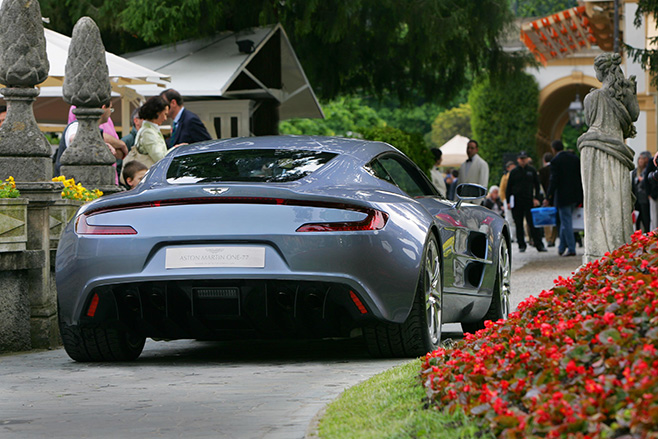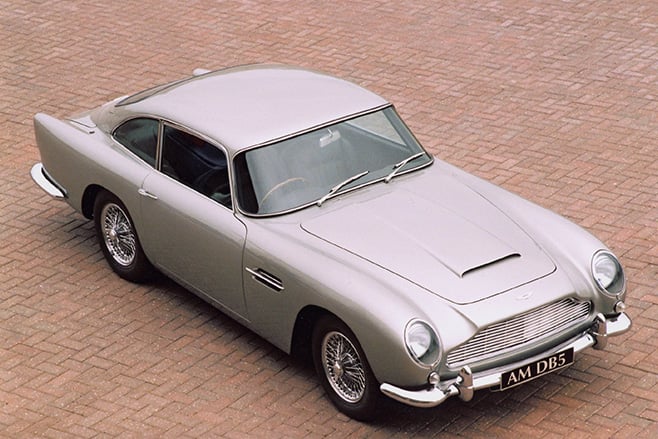
In our new Fast Facts series, WhichCar delves deep into the history of automotive brands to bring you fascinating facts and intriguing information.
Here we focus on Martin, Aston Martin – the British sports-luxury brand synonymous with suave secret agent James Bond, and of course beautiful sports cars.
1. MR MARTIN BUT NOT MR ASTON
Unlike Rolls-Royce, the Aston Martin name is derived from only one of the surnames of its two founders. Lionel Martin was partnered by Robert Bamford to start Bamford & Martin in 1913. The brand we know today was formed a year later – inspired by Martin’s strong performance in the Aston Clinton Hill Climb time trial event in the UK.
2. LE MANS
Aston’s first motorsport success of note was winning the 1922 French Grand Prix, though its racing credentials were truly locked in when it occupied all three podium places of the 1933 Le Mans 24 Hour race with its 1.5L.

3. THE DB FACTOR
Arguably the most famous of all Aston’s multiple owners over its 100-plus years of history is David Brown – it’s the English industrialist’s initials that continue to live on with the DB11 that is a successor to multiple models starting with the (underwhelming) DB1. That four-cylinder model emerged two years after tractor tycoon Brown acquired the Aston brand.
4. THE JB FACTOR
James Bond drove mostly Bentleys in the Ian Fleming novels but in 1965’s Goldfinger film, the DB5 started 007’s big-screen love affair with Astons. It has featured in no less than eight Bond films, while Astons have appeared in half of the 24 movies up to the most recent – Spectre. Other models have included DBS models old and new, Aston Martin V8 Vantage, as well as the Aston Martin Volante V12 Vanquish. Spectre’s hero Aston, the super-sleek DB10, isn’t actually a production car – it was built especially for filming (eight in total, plus two show cars), though did hint at the new DB11.

5. INVESTORS AND CONSORTIUMS
The first of multiple changes of ownership happened in 1926 when investors rescued the struggling company. A succession of investment companies and consortiums were then involved in the ’70s and ’80s before the Ford Motor Company assumed control with a majority 75 per cent stake in 1987. A Kuwait consortium led by Prodrive boss and former WRC honcho David Richards paid Ford US$975 million for Aston 20 years later as the US car maker disbanded its Premier Automotive Group umbrella of luxury brands. In 2014, British car industry veteran and former Nissan product chief Andy Palmer was appointed as president and CEO.

6. FORD ENGINES OUT, ASTON V12 AND AMG V8 IN
Aston’s V8 and V12 engines have long been produced by Ford, with the latter essentially a pairing of two Ford Duratec V6s tweaked by Ford’s long-associated engine specialist partner Cosworth. Aston’s new DB11, however, introduced a new in-house twin-turbocharged 5.2-litre V12, while future V8s will be built by Mercedes-Benz’s performance division AMG. Aston and Mercedes announced their new technical partnership in 2013, which includes scope for the sharing of electronics and potentially other components.
7. LAGONDA
In 1948 David Brown acquired the Lagonda car company to create a sister brand for Aston. A 2.6-litre Bentley six-cylinder used by Lagonda was combined with an Aston chassis to create the successful DB2 and DB2/4 models, with the engine gradually reaching 3.0 litres in size. In 2009, the Aston Rapide became a rare four-door within the company not to wear the Lagonda badge and the long-dormant Lagonda brand wasn’t revived until 2015 – with the V12-powered Lagonda Taraf ultra-luxury sedan. It harked back to the wedged-shaped (but V8-powered) four-door sold predominantly in the Middle East from 1976 to 1990. Sales of the Taraf are also mostly limited to the same region, with the addition of the UK and Europe.

8. ZAGATO: THE ITALIAN CONNECTION
In 2016, the Aston Martin Vanquish Zagato became the fifth exclusive production car to emerge from a collaboration with Italian coachbuilder Zagato that dates back to 1960. That was the year Aston turned to the specialist to create just 19 lighter and more aerodynamic versions of the DB4 GT. Multiple Aston Zagato models over the decades have included concept cars and one-off production cars for super-wealthy customers.

9. DB11
Following the 1993 DB7 regarded by many at the time as being the world’s most beautiful car, and the 2003 DB9, 2016’s DB11 successor became the first all-new mass-production Aston in more than a decade. Besides the aforementioned Aston V12, the latest DB heralds other firsts for Aston that include electric steering, multi-link rear suspension, and a new design language.

10. FIRST SUV
Aston would be one of the last luxury brands not to offer an SUV, but that’s set to change with the DBX – shown as a coupe-style concept at the 2015 Geneva motor show. A Lagonda-badged SUV, first previewed in 2009, is also anticipated.




